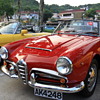Posted 11 years ago
 mharty
mharty
(2 items)
Although pocket watches are essentially a single design, there are a few different aesthetic elements that greatly effect the way the pocket-watch is used and displayed. These elements can determine the value and age of the watch, as well as being ultimately more or less attractive to each owner and potential buyer.
Collectors tend to stick with one particular design over all others, or one well-known brand that specialized in a certain design.
Pocket-watches are often classified by the type of face display they are endowed with.
There are five main types, the open-face, the half-hunter, the full-hunter, the double hunter and the half double hunter.
The open-face pocket watch is self-explanatory; its design has no cover and the time can be read without having to remove any obstructions. Open-face pocket-watches are quite common nowadays, but were not at all popular in the eighteenth and nineteenth centuries, particularly as the porcelain faces used could be damaged easily and needed the additional protection of a cover. This is why the full-hunter was developed: a pocket-watch complete with a cover that opened and closed on a hinge.
The full-hunter pocket watch design often featured an ornately engraved outer casing with initials or even a picture or photograph displayed on the inner. Time-keeping, however, could become quite a hassle when the cover had to be opened every time the owner wanted to check the time, and this is why the half-hunter was invented.
The half-hunter pocket-watch featured a cover that included a crystal or hole that allowed the owner to see the hands of the watch without having to open it.
Another factor to consider with pocket-watch design is the placement of their stem (sometimes referred to as the pendant). Traditionally the stem would be located above the ''12'' on an open-face pocket-watch, allowing the owner to hold the watch by the pendant and read the time.















